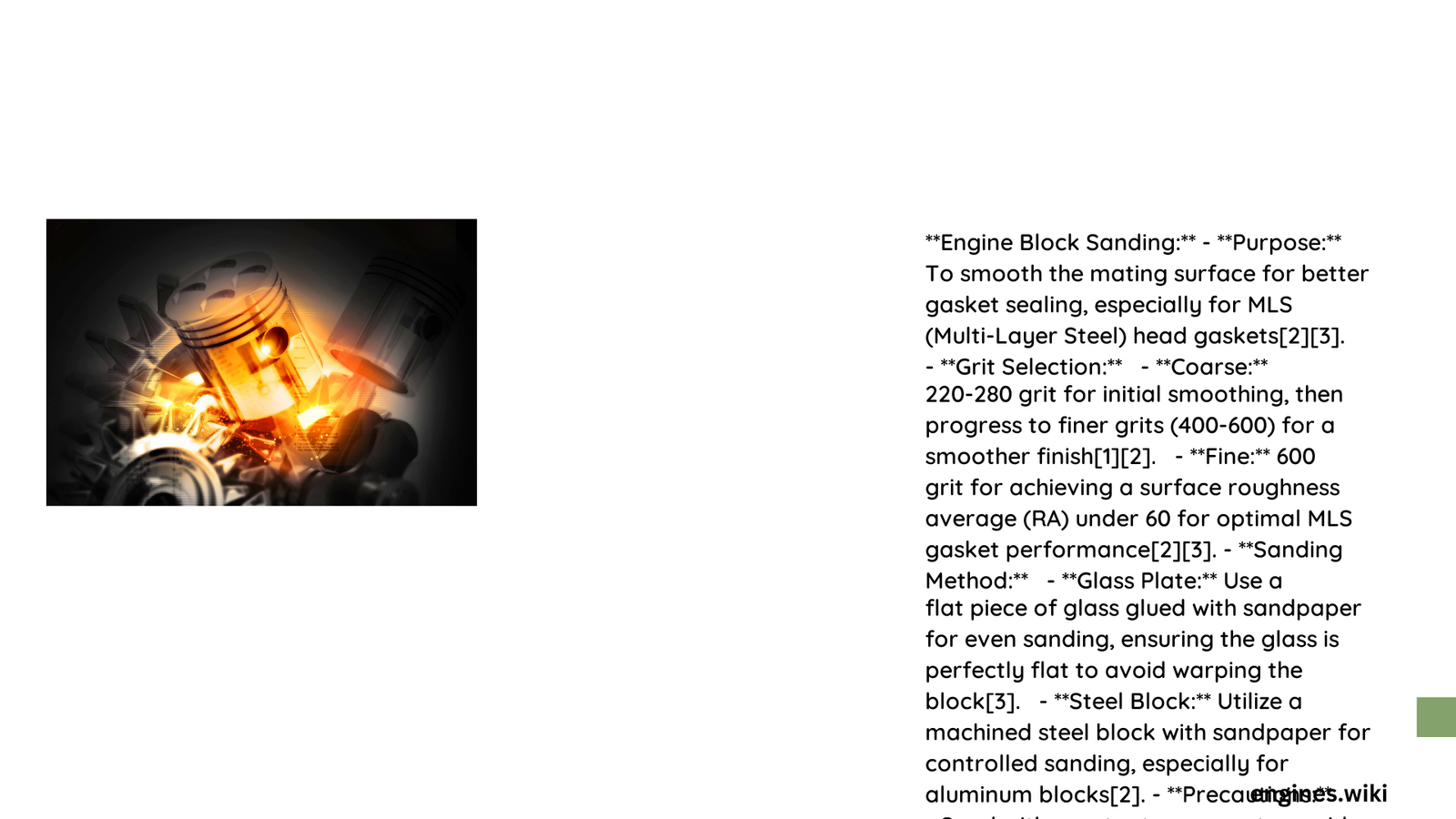Engine block sanding represents a critical precision machining process where automotive technicians meticulously smooth and prepare engine block surfaces to ensure optimal performance, seal integrity, and dimensional accuracy. This intricate procedure involves carefully removing microscopic imperfections, creating perfectly flat mating surfaces, and preparing critical engine components for reassembly with minimal tolerances.
What Makes Engine Block Sanding Critical?
Engine block sanding is not merely a cosmetic procedure but a fundamental engineering technique that directly impacts engine performance, reliability, and longevity. By systematically addressing surface irregularities, technicians can:
- Eliminate microscopic peaks and valleys
- Ensure proper gasket sealing
- Restore critical dimensional tolerances
- Prepare surfaces for precise component fitment
Tools Required for Precision Sanding
| Tool Category | Recommended Specifications | Purpose |
|---|---|---|
| Abrasive Sheets | Silicon Carbide, 80-400 Grit | Surface Preparation |
| Sanding Blocks | Aluminum or Granite Reference Surfaces | Maintaining Flatness |
| Measuring Instruments | Precision Straightedge, Feeler Gauges | Verifying Surface Flatness |
How to Approach Engine Block Surface Preparation?

Surface Assessment Techniques
Before initiating sanding, comprehensive surface evaluation becomes paramount. Technicians typically employ:
- Visual Inspection
- Check for visible warping
- Identify deep scratches or scoring
-
Detect potential casting imperfections
-
Precision Measurement
- Use optical comparators
- Employ digital surface profilometers
- Verify deck surface flatness within micron-level tolerances
Sanding Methodology
Successful engine block sanding follows a systematic progression:
- Initial Evaluation: Assess overall surface condition
- Rough Sanding: Remove significant surface irregularities
- Progressive Refinement: Gradually reduce surface roughness
- Final Verification: Confirm dimensional accuracy
What Are Common Challenges in Engine Block Sanding?
Technicians frequently encounter several critical challenges:
- Maintaining precise flatness across large surfaces
- Avoiding over-sanding which can compromise block integrity
- Ensuring uniform material removal
- Preventing thermal distortion during machining
Advanced Considerations
Experienced machinists recognize that engine block sanding transcends simple surface preparation. It involves understanding:
- Material metallurgy
- Thermal expansion characteristics
- Microscopic surface interaction dynamics
Recommended Practices for Optimal Results
- Always use calibrated, high-quality abrasives
- Maintain consistent, controlled pressure during sanding
- Clean surfaces thoroughly between sanding stages
- Use precision measurement tools for verification
- Work in a controlled, dust-free environment
Technical Specifications
- Typical Surface Roughness Target: 20-40 microinches
- Recommended Flatness Tolerance: ±0.002 inches
- Ideal Grit Progression: 80 → 120 → 220 → 400
Conclusion
Engine block sanding represents a sophisticated intersection of mechanical engineering and precision craftsmanship. Success demands technical knowledge, specialized skills, and meticulous attention to detail.
